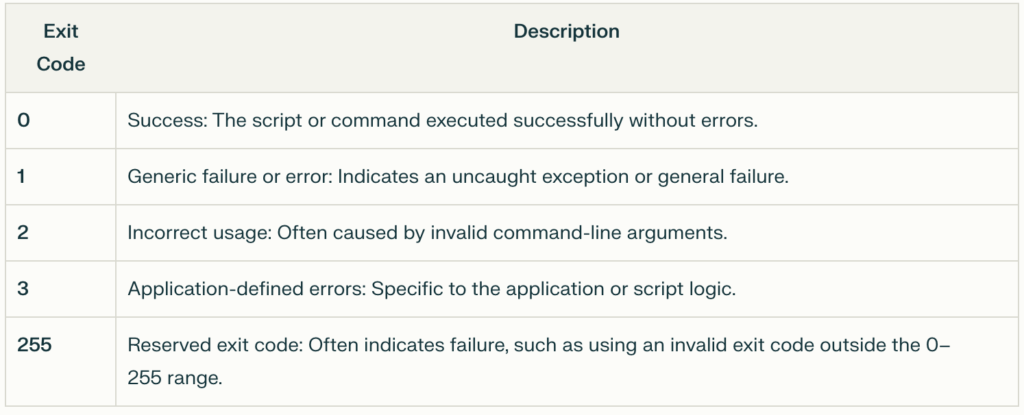Step-by-step guide on leveraging PowerShell exit codes to automate script error handling and integrate with external automation tools.
When it comes to PowerShell scripting and automation, understanding exit codes (or return codes) is essential for effectively managing errors and troubleshooting. These exit codes serve as indicators, letting you know whether a script or command executed successfully or ran into issues.
In this article, we’ll dive into what PowerShell exit codes are, why they’re important and how to handle them like a pro.
An exit code is a numeric value that a script, command or application returns when it finishes executing. PowerShell, similar to other scripting languages, uses these exit codes to signal the result of a process:
Exit codes are particularly valuable in automated settings like CI/CD pipelines, where they help determine the next steps based on whether tasks succeeded or failed.
Exit CommandThe Exit command in PowerShell is your go-to for ending a script and specifying an exit code.
Example:
# Script.ps1
if (-Not (Test-Path "C:\\\\ImportantFile.txt")) {
Write-Host "File is not found!"
Exit 1 # This sets the exit code to 1, indicating it a failure
} else {
Write-Host "File is exists."
Exit 0 # This sets the exit code to 0, indicating it a success
}
You can easily grab the exit code from the last command you ran in PowerShell using the $LASTEXITCODE automatic variable.
Example:
# Execute a command
ping 127.0.0.1
# Now, check its exit code
Write-Host "Exit Code: $LASTEXITCODE"
PowerShell’s structured error handling lets you tackle errors effectively and return the right exit codes.
Example:
try {
# Try to perform a risky operation
Get-Content "C:\\NonExistentFile.txt"
Exit 0
} catch {
Write-Host "An error occurred: $($_.Exception.Message)"
Exit 1
}
PowerShell exit codes are a powerful tool for managing errors and automating tasks. When both administrators and developers understand how to handle these codes effectively, they can streamline their workflows, enhance the reliability of their scripts and make troubleshooting much simpler. Whether you're working with basic scripts or complex automation pipelines, utilizing exit codes ensures everything runs smoothly and predictably.
Exit codes are numeric values representing the execution outcome, while error messages provide descriptive information about the issue.
Yes, you can define and use custom exit codes to represent specific conditions or errors in your scripts.
If you don’t use the Exit statement, PowerShell exits with a default code of 0, assuming the script executed successfully.
When running external commands or executables from PowerShell, $LASTEXITCODE captures the exit code returned by those applications.
You can use the -ErrorAction SilentlyContinue parameter to suppress errors during command execution: "Get-Content "C:\NonExistentFile.txt" -ErrorAction SilentlyContinue"
FEATURES
EXPLORE IT Asset Management